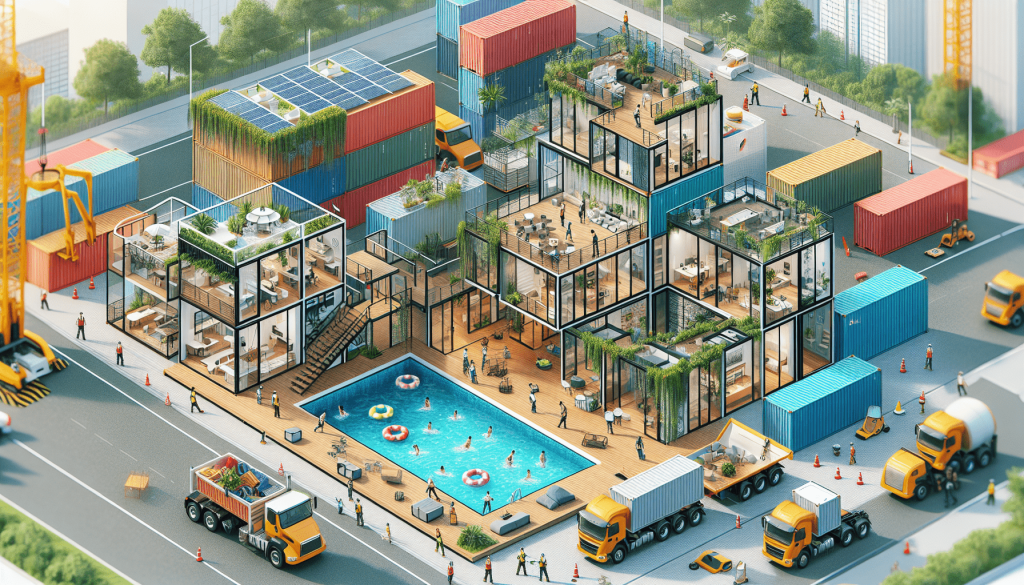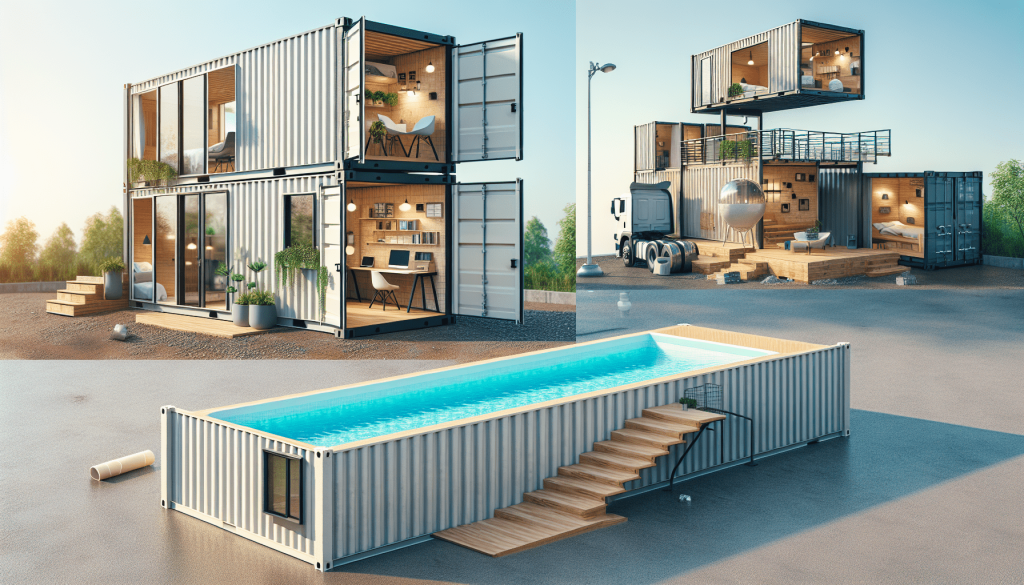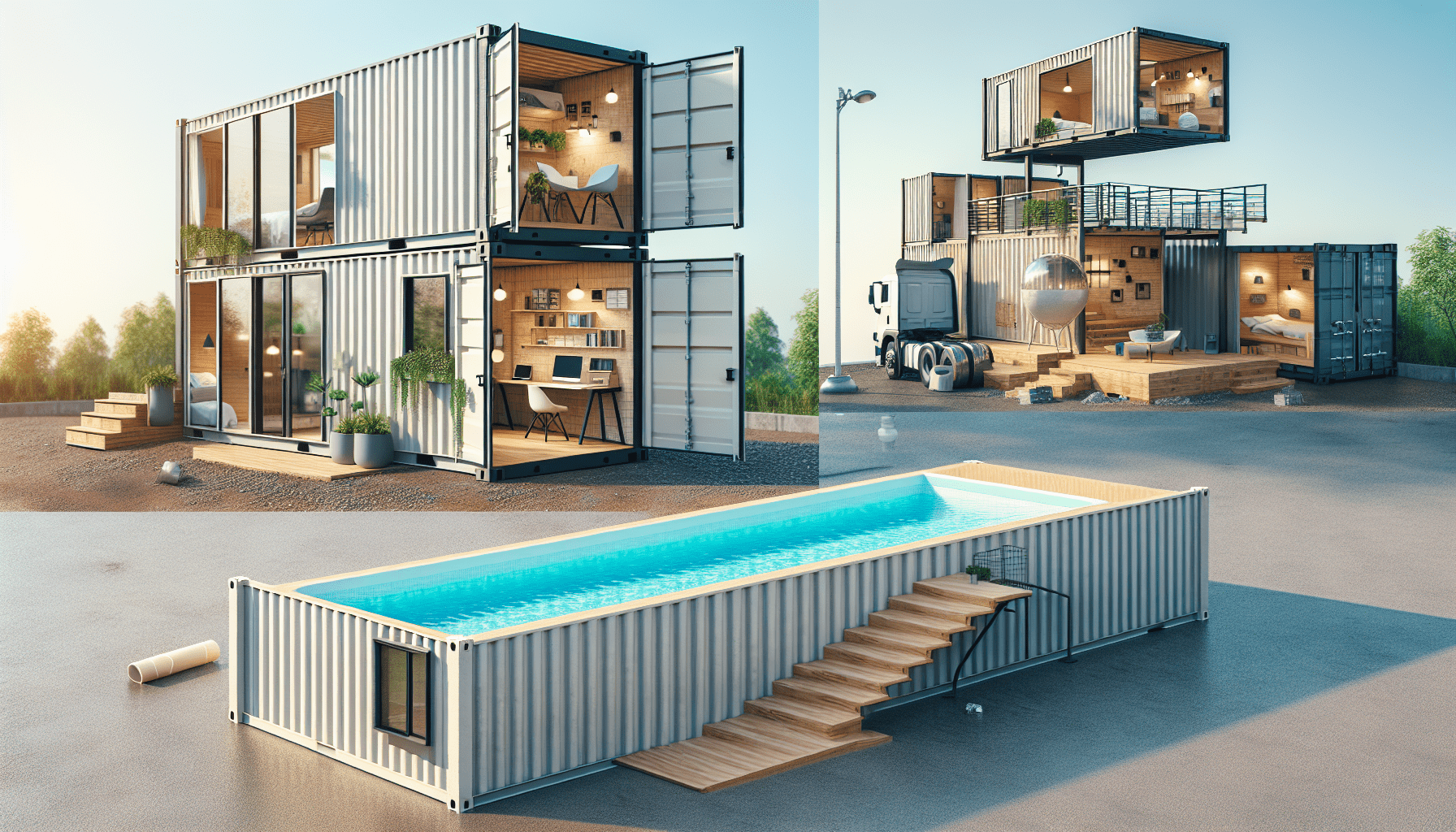So you’ve stumbled upon the fascinating world of shipping containers, and the burning question in your mind is: can you modify a shipping container? Well, my friend, the answer is a resounding yes! Shipping containers are no longer restricted to their original purpose of transporting goods across the seas. With a little creativity and some expert guidance, these versatile steel boxes can be transformed into just about anything you can imagine – from trendy pop-up shops and eco-friendly homes to unique office spaces and even swimming pools. So, buckle up and prepare to be amazed at the endless possibilities that lie within the realm of container modification.

Overview of Shipping Container Modification
Shipping container modification refers to the process of modifying standard shipping containers for various purposes and functionalities beyond their original intended use of transporting goods. This practice has gained considerable popularity in recent years due to the versatility, durability, and cost-effectiveness of shipping containers. By customizing and transforming these sturdy steel structures, individuals and businesses can create unique and innovative spaces for an array of applications.
Definition of Shipping Container Modification
Shipping container modification involves altering the structure, function, aesthetics, or specialized features of a shipping container to suit specific needs. It typically includes structural modifications, functional modifications, aesthetic modifications, and specialized modifications. These modifications can range from simple alterations like adding insulation or ventilation, to more complex conversions such as transforming containers into homes or mobile offices.
Purpose and Benefits of Modifying Shipping Containers
The purpose of modifying shipping containers is to repurpose these versatile structures for a wide range of applications. By converting shipping containers into livable spaces, portable offices, retail shops, or creative studios, individuals and businesses can benefit from affordable, durable, and customizable solutions. The key benefits of modifying shipping containers include cost-effectiveness, sustainability, mobility, rapid construction, and adaptability. These modifications provide an opportunity to embrace creativity, innovation, and sustainable practices in the world of architecture and design.
Common Modifications Made to Shipping Containers
Numerous modifications can be made to shipping containers to suit various needs and preferences. These modifications can be categorized into structural, functional, aesthetic, and specialized categories.
Structural Modifications
Structural modifications involve strengthening the container’s structure to ensure its stability and durability. This may include reinforcing the walls, roof, or corners of the shipping container. Welding and additional bracing are commonly used techniques to enhance the structural integrity of the container. Furthermore, cutting openings for doors, windows, and vents is another common structural modification.
Functional Modifications
Functional modifications focus on enhancing the practicality and usability of the shipping container. This includes insulation and ventilation to maintain a comfortable interior temperature in various climates. Electrical and plumbing installations are often required to provide basic amenities and utilities. Installing heating and cooling systems, adding lighting fixtures, and creating partitions or divisions to separate different functional areas are also popular functional modifications.
Aesthetic Modifications
Aesthetic modifications aim to enhance the visual appeal of the shipping container. Exterior cladding options such as wood, metal panels, or vinyl can be added to transform the container’s appearance. Painting the container or applying customized branding can create a unique and eye-catching design. Graffiti or mural art is another creative option for adding vibrant and artistic elements to the container. Roofing modifications can also be made to improve the container’s aesthetic and functionality.
Specialized Modifications
Specialized modifications involve transforming shipping containers for specific purposes or industries. These modifications cater to unique needs, such as turning containers into mobile offices or retail spaces. Container homes or tiny houses are increasingly popular, offering a sustainable and cost-effective housing solution. Pop-up shops or temporary event spaces can be easily created by modifying containers. Containers can also be converted into restaurants or cafes, providing a distinctive dining experience. Art studios or creative spaces can also be established by adapting containers to meet the requirements of artists and designers.

Permits and Regulations
When modifying shipping containers, it is crucial to obtain the necessary permits and comply with local building codes and regulations. The specific permits required may vary depending on the nature and extent of the modifications. Consulting with local building authorities and professionals experienced in container modifications can help navigate these legal requirements. Compliance with building codes ensures that the modified container meets safety standards and can be used legally for the intended purpose.
Challenges and Considerations
While shipping container modification offers numerous benefits, several challenges and considerations should be taken into account.
Transporting Modified Containers
One significant challenge is transporting modified containers to the desired location. Due to their size and weight, special equipment such as cranes, forklifts, or flatbed trucks may be required. Careful planning and logistics are necessary to ensure a smooth delivery process, especially for large-scale modifications.
Structural Integrity and Weight Distribution
Altering the structure of a shipping container can affect its overall stability and weight distribution. It is important to consult with professionals who can assess and ensure that the modified container can withstand intended loads and environmental conditions. Proper reinforcement and distribution of weight are essential to maintain the container’s structural integrity.
Insulation for Climate Control
Insulating the container adequately is crucial for climate control and energy efficiency. Without proper insulation, containers can become extremely hot or cold depending on the climate, making them uncomfortable or unsuitable for human habitation or sensitive equipment. Choosing appropriate insulation materials and techniques is vital to create a comfortable interior environment.
Soundproofing and Acoustics
Soundproofing and managing acoustics within a modified shipping container can be challenging. Steel containers have inherent sound-conducting properties, which can lead to increased noise levels inside the container. Addressing soundproofing measures, such as using sound-absorbing materials or installing acoustic panels, can help create a quieter and more pleasant atmosphere.
Condensation and Moisture Issues
Containers are susceptible to condensation and moisture buildup, which can lead to mold growth and deterioration of the interior materials. Proper ventilation, moisture barriers, and insulation are essential to prevent these issues. Adequate waterproofing measures during the modification process can mitigate the risk of moisture-related problems.
Costs and Budgeting
The cost of modifying shipping containers varies depending on the extent and complexity of the modifications, as well as factors such as location and labor costs. Factors that influence modification costs include structural alterations, functional requirements, aesthetic upgrades, and specialized features. While costs may vary significantly based on individual preferences and needs, typical price ranges for common modifications can serve as a reference point. Budgeting tips and cost-saving measures, such as repurposing materials or opting for simplified designs, can help manage costs and ensure a successful container modification project.
Professional Assistance
When embarking on a shipping container modification project, it is often beneficial to engage professionals with expertise in various aspects of the process.
Architects and Designers
Architects and designers can provide valuable insight into the design, functionality, and structural considerations of modifying shipping containers. Their expertise can help optimize the use of space, create aesthetically pleasing designs, and ensure compliance with building codes and standards.
Contractors and Builders
Working with experienced contractors and builders is essential for ensuring the quality and successful execution of the container modification project. They possess the necessary skills and equipment to handle structural alterations, electrical and plumbing installations, and other technical aspects of the project.
Container Modification Companies
Collaborating with container modification companies can streamline the entire process, as they specialize in transforming shipping containers for various applications. These companies have extensive experience in modifying containers, ensuring that the project is completed efficiently and to professional standards.
Consulting and Advisory Services
Seeking consulting and advisory services can be advantageous for those new to container modification or facing specific challenges. Consultants can provide guidance on legal requirements, permits, cost estimations, and project management, helping individuals and businesses navigate the complexities of the modification process.
Final Thoughts
Shipping container modification offers a world of possibilities for creating unique and functional spaces. From repurposing containers into homes and offices to designing temporary event spaces or creative studios, the versatility of these structures is immense. Moreover, container modification aligns with sustainability goals by repurposing and recycling existing resources. By embracing creativity and innovation, individuals and businesses can push the boundaries of traditional architecture and design. The future of shipping container modifications holds exciting potential for developing even more efficient, eco-friendly, and inventive solutions for various industries and sectors.

I am James, the creator behind SeaBoxInnovations.com. Welcome to our premier online destination dedicated to the world of sea containers. Think Inside the Box is our tagline, and our website is your go-to source for exploring the endless potential of these versatile and adaptable containers. Whether you’re interested in purchasing, customizing, or learning about the latest trends in container architecture and design, we have you covered. Join us as we bridge the gap between traditional uses and cutting-edge applications, promoting sustainability and innovation in design and construction. Get ready to embark on your next big project with SeaBoxInnovations.com.

